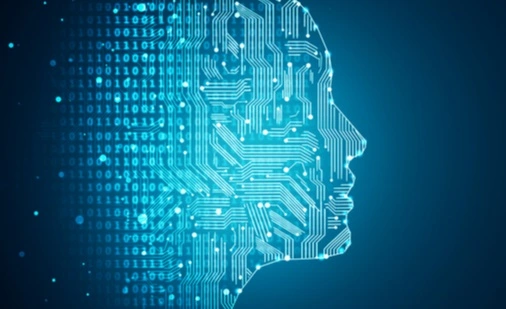You may have heard of machine learning at some point in your life, but you fully understand what are its advantages and disadvantages, first, you must learn what exactly it is and where it is used quite often. Here we go:

What is Machine Learning?
So what exactly is Machine Learning, well, let’s break it down from the start. Shall we? The first step is gathering and preparing your data. You clean up the data, sort it out, label it, and get it all set so your model has the perfect starting line. Next up, we jump into model training. This is where the magic happens: you feed the data to the algorithm, and it learns, kind of like how you’d teach a kid through repeated examples until the lightbulb clicks, you know? Once our model gets the hang of things, it’s time for a bit of a tune-up to boost its accuracy, making sure it’s nailing its tasks like a pro.
And yes, there are a few types of machine learning, and why not? And these flavors of machine learning are: supervised, unsupervised, semi-supervised, and reinforcement learning. Well, these are the main ones, and if you are into machine learning, these are the main types you’ll be dealing with, learning, or working with.
Advantages of Machine Learning
1. Automating the Boring Stuff
Can you imagine a life without those yawn-inducing, repetitive tasks? That’s where machine learning steps in. Whether it’s crunching numbers, organizing schedules, or even making weighty decisions, smart algorithms are on it, transforming those complex tasks into just a thing that can be done without too much of your input. This shift not only ramps up efficiency but also frees you up for the fun stuff, you know, thinking big and getting creative!
2. Getting Things Right, Every Time
The secret to perfection? More data. Right? The more fodder you feed these machine-learning algorithms, the sharper they become. As simple as that. We’re talking top-notch accuracy and precision here. The evidence of that can be seen in the current medical scene where you can see machine learning outdoing traditional methods by miles, providing spot-on diagnostics that significantly boost patient care.
3. Mastering Big Data
Overwhelmed by oceans of data? Well, the thing is, machine learning algorithms thrive on it. Designed to sift through and make sense of gigantic datasets effortlessly, they’re indispensable in scenarios like fraud detection, you know, scanning huge chunks of transaction data on the fly to pinpoint the shady stuff.
4. Endless Possibilities
What’s not to love about machine learning’s versatility? It’s making waves across diverse sectors, from health care to finance, and even in your daily Netflix binges or Amazon shopping sprees. Don’t you know that? That personalized suggestion thing you love about Netflix, Amazon, or any other platform out there, yes, that’s the result of machine learning working in the background.
5. Making Customers Happy
You see, machine learning is revolutionizing customer service quite literally, taking it several notches higher. With chatbots and virtual assistants crafted from sophisticated natural language processing (NLP), customer queries are addressed in a snap, anytime and all the time. This way, the good old and boring chatbot responses are more personalized now, and customers seem to like that.
6. A Safe Bet for Security
Another great thing about machine learning is that it can very well detect fraudulent activities from a mile away. How? Well, since machine learning algorithms are pros at processing big data in seconds, that’s why they are much better at predicting things on the basis of patterns and behavior. For financial bodies out there, it’s pretty crucial to monitor transactions meticulously and in real-time, machine learning acts as the ultimate guard for them. And who doesn’t want that?
Disadvantages of Machine Learning
1. Data Dependency
You see, machine learning models are seriously picky eaters when it comes to data because they absolutely need high-quality, spot-on data to function effectively. If the data is biased, incomplete, or just doesn’t mirror the real world accurately, the model’s output could really take a nosedive. And that’s where everything goes wrong in the training of a machine learning model. Let’s not even get started on the headache of collecting and preparing this data, it’s not only a time black hole but also a drain on resources. And, spoiler alert though, bad data equals dodgy predictions and even worse decisions.
2. Resource Hog
Trying to build and operate machine learning models can be super costly, and that is the very reason why many organizations stay out of this whole machine learning drama. Training these intricate models demands loads of computational power and often specialized hardware like GPUs, so yes, for the smaller players out there, the steep costs can be a deal breaker.
3. Head-Scratching Complexity
Ever tried decoding ancient hieroglyphs? That’s what understanding some machine learning models feels like, especially the deep learning types. Well, it is somewhat like that. This opacity can become a major hitch in critical sectors like healthcare and finance, where the stakes of understanding the “why” behind decisions are sky-high.
4. Oops! Errors and Bias
Machine learning models can act like mirrors, reflecting any biases and errors present in the training data. So the equation is pretty simple here, if the data’s off, the model’s output will be too, potentially perpetuating existing biases in areas like recruitment or skewing financial predictions. Always remember, if the data fed to the machine learning algorithm is shady or incorrect, it’ll show in its outputs too.
5. Job Displacement Issues
Just like it happened with ChatGPT recently, many people thought that their jobs would be gone in a few years down the line. This is somewhat true, but the thing is, if you adapt to this new change, you’ll be able to make your position even stronger where you work. Sure, jobs are at risk, but only for those who won’t do anything about this new change coming to this real world.
| Advantages | Disadvantages |
| Increases efficiency and frees up time for creative tasks. | Requires high-quality, accurate data; poor data leads to poor outcomes. |
| High accuracy and precision, especially with large data sets, as seen in medical diagnostics. | High costs for building and operating models, needing significant computational power and specialized hardware. |
| Excels at processing and making sense of large datasets, useful for applications like fraud detection. | Complexity and lack of transparency in understanding models, especially deep learning ones. |
| Versatile across various sectors, enhancing experiences in entertainment, shopping, etc. | Models can reflect and perpetuate biases and errors present in training data, impacting areas like recruitment and finance. |
| Improves customer service with sophisticated chatbots and virtual assistants. | Potential for job losses, though adaptation can mitigate the impact. |
| Effective in detecting fraudulent activities and predicting patterns, crucial for financial security. |

